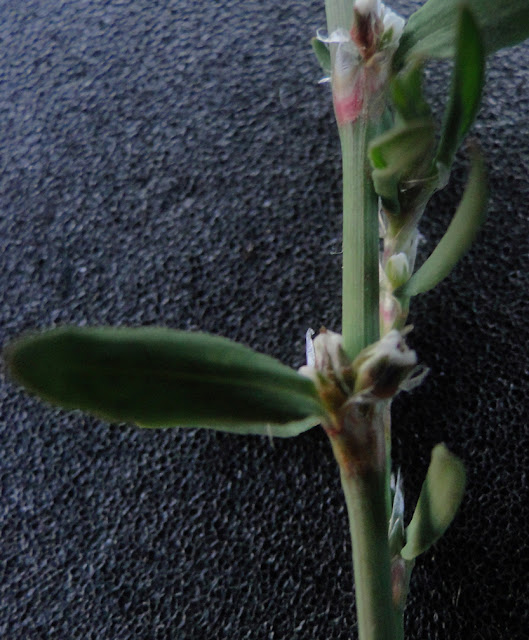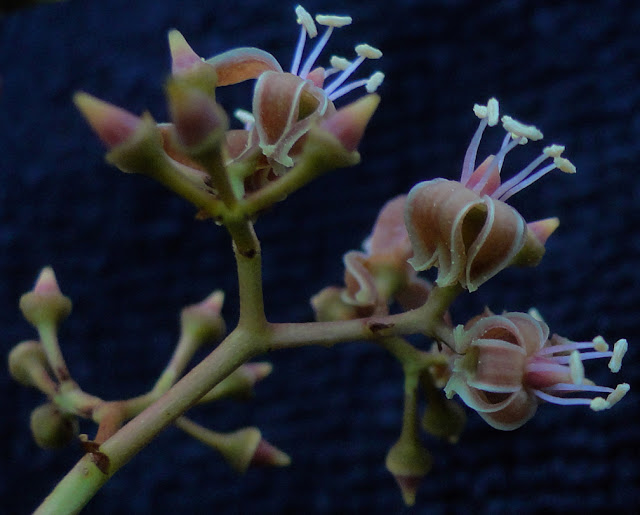Arrived about 5 pm. Out almost 2 hours. 185 photos, 83 keepers. Hot.
I went to the west end to check Eriogonum niveum, snow buckwheat there. I was surprised by the abundance of plants. But I saw only two blossoms.
Entering the park I noticed that one of the Eriogonum umbellatum, sulfur buckwheat was blazing with yellow blossoms but the blossoms of the round patch were brown. There were many other yellow buckwheat in the area in various shades from ‘new’ yellow, to dead brown.
I have read that E. umbellatum is very diverse. As different as the patches of foliage look, the blossoms are much the same. I wondered, earlier, if the blossoms of the late blossoming plants would be a full globe in full bloom as the earlier blossoming plants were and they are.
*
The opening blossoms on the snow buckwheat are impossibly small. My photos are a disappointment.
I circled back to the main trail just to walk different land. Beside the main trail I saw a plant I didn’t recognize that had bud like structures. There were several nearby so I pulled one and returned to the car to photograph it. The hood of the car makes a good background for some plants. [Wrong! Apparently a blue sky turns the white car blue.]
The unfamiliar plant should have been familiar. It was Chenopodium album, lamb’s quarters.
I noticed two familiar two ‘weeds’ by the car, I know the ground hugger with the maple leaf leaves but can’t call up the name [Malva neglecta, common mallow]. Amaranthus retroflexus, red root pigweed were abundant and were, I suppose, in bloom. [Blossoms fell off the plant onto my black towel. I didn’t know they were blossoms till I checked Burke and saw faint indications of what the blossoms might look like … and cut, pasted and enlarged them in the computer.]
I recalled that I have intended to check the apparent apple tree for fruit to verify my guess. I walked back to do that and it is, indeed an apple. [Malus xdomestica, apple]
Returning to the car by the main trail this time I looked for the green stem ground hugger and saw plenty. Their blooms are invisible till I get really close to them.
I drove to the north access to check, yet again, on the Chondrilla juncea, rush skeleton weed. I found only two plants with apparent buds. I expect to get out in the morning this week to see if they close during the heat of the day.
I made some landscapes showing north pond deep in seven foot grass.
I noticed some very wiry willowy plants at the line of boulders at the east end of north trail. I attempted to photograph them but they are so very small my photos are not a good success.
I suppose they are only undernourished Epilobium brachycarpum, autumn willow herb, but I can’t be sure.
I drove to the east access to try to find the unidentified herb that I had seen on the previous outing.
I was surprised that the Gnaphalium palustre in the trail were not destroyed by the dogs of the dog walkers. They were aging but they were still intact. I tried hard to get their ray flower crowns.
I walked over to the east access to the bottom of south pond to check on the Xanthium strumarium, cocklebur. Nothing is happening with the cocklebur as yet.
I didn’t photograph the rich red brown of the Rumex species, various ‘docks’. I can’t say why. They are a pleasure to look at.
But I was delighted to find the unidentified plant I was looking for, to find it in modest abundance and to find it in bloom. It is the Lythrum salicaria, purple loosestrife I’ve been looking for.
On the way back to the car I noticed a plant I didn’t recognize and did snapshots of it just to help me remember to watch for it. It was an herb but it was a little like a young ponderosa, a single stem with needle like leaves.
I noticed that what I called the red stemmed ground hugger will rise up from the ground if it gets a chance. I should have photographed it in situ instead of pulling it. It’s a mistake one makes at the end of the day. The straight red stem held the plant an inch or so above the ground and the branches reached up.
I searched the pile of Parthenocissus vitacea, woodbine across the street for blossoms. I seem to have found some.
I thought I saw some in town that were bright yellow. These were not.
I read somewhere that wodbine flowers are green. No useful information in Burke, Carr or Turner.
 |
| Eriogonum umbellatum, sulfur buckwheat, past bloom |
 |
| Eriogonum umbellatum, sulfur buckwheat, new bloom |
 |
| Eriogonum umbellatum, sulfur buckwheat |
 |
| Chenopodium album, lamb’s quarters |
 |
| Malva neglecta, common mallow |
 |
| Amaranthus retroflexus, red root pigweed |
 |
| The small tree on the left is Malus xdomestica, apple. The large shrub on the right is Cornus sericea, red osier dogwood |
 |
| Familiar but unidentified ground hugger seems to like crcks in pavement places where it is driven over and walked on |
 |
| Views of North :Pond at the end of July The grass is probably 7 feet deep |
 |
| Chondrilla juncea, rush skeleton weed |
 |
| This could be an undernourished Epilobium brachycarpum, autumn willow herb |
 |
| Gnaphalium plustre, marsh cudweed |
 |
| Lythrum salicaria, purple loosestrife said to be a noxious weed |
 |
| unidentified foliage |
 |
| The red stemmed ground hugger seems to lift up when it can This one was probably 4 inches high The white bit is root |
 |
| Parthenocissus vitacea, woodbine |



































































No comments:
Post a Comment